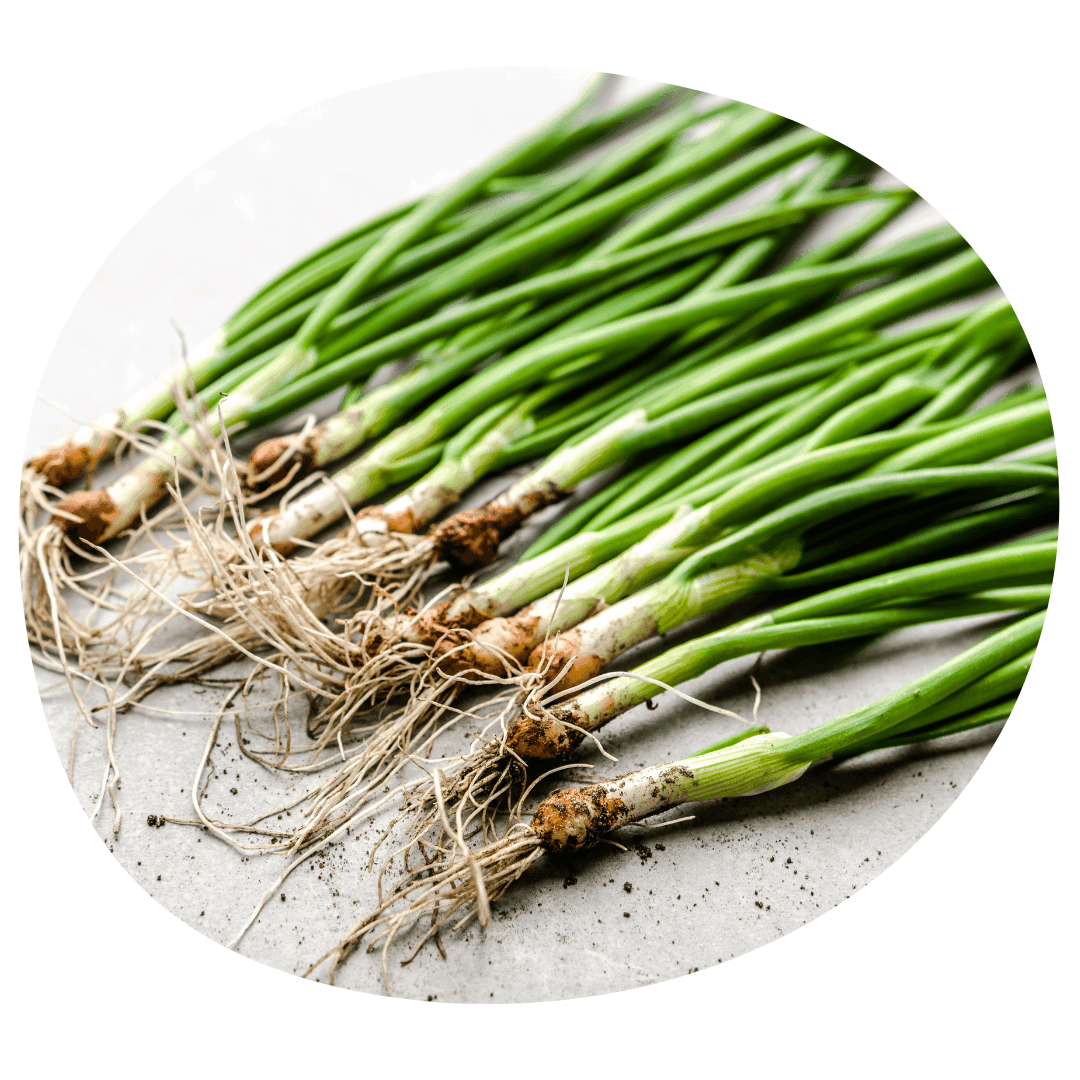How to Grow Bunching / Spring Onions
Growing Conditions
Bunching onions, also known as spring onions, green onions, salad onions, or scallions, are a relative of common onions grown for their greens rather than their bulbs. Bunching onions grow well in containers because they don't require much space, but they also do well in the garden. They can be sown under cover in the winter or early in the spring, as they are quite cold-tolerant. They prefer full sun but can handle part shade in the afternoon. Sow them in a loamy, well-draining area and repeat sowings every few weeks through the spring.
Starting
Bunching onions can be direct sown in the garden or containers as long as the soil temperature is 4°C or above. Sow your onions at multiple intervals for successional harvests. Because bunching onions are cold tolerant their season may be extended with row covers or cold frames. Sow your seeds 1/4" deep and space rows 6" apart. Seedlings should be thinned to 1" apart after sprouting. It's also possible to start your bunching onion seeds indoors 6-8 weeks before your last frost.
Find our full guide to seed starting here.

Care
Bunching onions can be thinned to 1" apart after sprouting if necessary. Keep your beds and containers well-weeded to prevent weeds from crowding out your plants. Water often, especially in hot weather, as they have shallow root systems and are susceptible to drying out. Fertilizing is typically unnecessary if the soil is fertile, but a balanced fertilizer can be added, especially when growing in poor soil or small containers.
Pests and Diseases
Cutworms - Small caterpillars that chew through stems. Look for damage to the stems at ground level.
Onion Maggots - Tiny white worms that burrow into and feed on onion bulbs, destroying the bulb and causing foliage to wilt and yellow.
Slugs and Snails - Common garden pests that feed after dark, leaving large patches of damage.
Crop rotation, garden cleaning, and proper spacing between plants are the best ways to prevent problems caused by pests and diseases. Diatomaceous earth can be used to control crawling pest species, while sticky traps will catch flying pests. Row covers and insect netting can also prevent travelling pests from landing on your crops and causing damage. Ensure good drainage in your chosen planting spot to prevent problems with fungus and rot. Contact us for more specialized pest control methods such as beneficial nematodes.
Harvest
Bunching onions are usually fully mature by around 60 days, but can be harvested earlier for smaller, milder plants. You can begin harvesting once they have grown to 6" high, when leaves are mild and tender. Mature plants have a stronger flavour. Harvest by cutting leaves from the stem or pulling the entire plant. Green onions may be stored in the fridge or diced and frozen.

